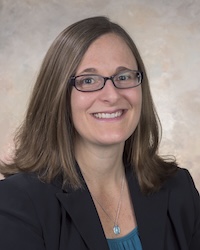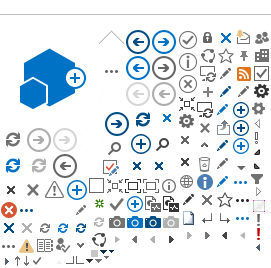SIS Area
OVERVIEW - SPACE INTERNETWORKING SERVICES AREA (SIS)
Welcome to the Space Internetworking Services (SIS) Collaborative
Work Environment.
The objective of the Space Internetworking Services (SIS) Area is to
address the communications services and protocols supporting end-to-end
communications among applications, particularly where those
communications may span multiple heterogeneous physical and data link
technologies. Areas addressed by SIS include the networking
infrastructure to support application-to-application communication
onboard a single spacecraft, communications among multiple spacecraft,
and communications between space-based applications and their
counterparts on Earth and/or other planetary bodies.
The SIS Area deals with communication services and protocols that
are independent of specific link technology (as a lower layer bound) and
independent of application-specific semantics (as an upper bound). Thus
the SIS area covers essentially the network through application layers
of the OSI reference model.
SIS protocols use the underlying communication and infrastructure
services provided by the Space Link Services (SLS) and Spacecraft
Onboard Interface Services (SOIS) areas and any other onboard networks,
and provide the networked connectivity needed by applications developed
in other CCSDS areas such as Mission Operations and Information
Management Services (MOIMS) and Spacecraft Onboard Interface Services
(SOIS). The SIS services provide hardware-independent mechanisms for
identifying end systems, and provide communications services that allow
users to disregard whether the communication is over a single data link
layer or over multiple hops. The suite of capabilities developed by the
SIS Area accommodates all ranges of delay, interactivity, and
directionality, although not all protocols are appropriate for all
environments.
The services provided by SIS protocols free applications from having
to have intimate knowledge of the underlying communications protocols
and mechanisms, and from having to know the physical location(s) of the
entities with which they are communicating. This enables applications to
focus on the application-specific protocols and interactions necessary
to achieve their goals.
PUBLICATIONS
SIS Area Approved Publications can be accessed by
clicking here. All CCSDS Approved Publications can be accessed by
clicking here.
POINTS OF CONTACT
 Area
Director: Tomaso de Cola
Area
Director: Tomaso de Cola
DLR/German Aerospace Center
Institute of Communications and Navigation
Satellite Networks
Münchner Straße 20
82234 Oberpfaffenhofen-Wessling
Telephone: +49 8153 28-2156
Fax: +49 8153 28-2844
E-mail:
tomaso.decola@dlr.de
Bio:
Click Here
 Deputy Area Director: 'Vinny' Ivica Ristovski
Deputy Area Director: 'Vinny' Ivica Ristovski
NASA/Marshal Space Flight Center
Mail Code EO50
Marshall Space Flight Center, AL 35812
Telephone: +1 256 544-3646
E-mail:
ivica.ristovski@nasa.gov
Bio:
Click Here
MAILING LIST
sis@mailman.ccsds.org
Click here to join mail list
Click here to view archives
SIS-MIA
OVERVIEW - MOTION IMAGERY AND APPLICATIONS WORKING GROUP
(SIS-MIA)
Welcome to the Motion Imagery and Applications Working Group
Collaborative Work Environment. Motion Imagery and Applications Working
Group (SIS-MIA) falls under the Space Internetworking Services (SIS)
Areas of the CCSDS.
Human & robotic spaceflight endeavors are expected to be
collaborations between many agencies, with complex interactions between
spacecraft, with intermediate locations (EVA crew, habitats, etc.)
requiring the ability to view video generated by another agency’s
systems. Therefore interoperability between these systems will be
essential to mission success and in some cases crew safety. Such
interoperability will only be achieved by use of common references and
joint agreement on international standards, either commercial or CCSDS
or a combination of the two. The Motion Imagery & Applications Working
Group will address interoperability issues including packetization of
compressed and uncompressed data streams and files, metadata, embedded
audio, command & control methodologies, compression standards,
distribution formats, common references and quality standards.
POINTS OF CONTACT
 Chair: Falk Schiffner
Chair: Falk Schiffner
German Aerospace Center (DLR e.V.)
Space Operations & Astronaut Training | Communication & Ground Stations
Rutherfordstrasse 2 | 12489 Berlin
Telephone: NA
E-mail:
falk.schiffner@dlr.de
 Deputy Chair: Beth St. Peter
Deputy Chair: Beth St. Peter
NASA/Marshall Space Flight Center (MSFC)
Mail Code: HP10
Huntsville, AL 35812
Telephone: NA
E-mail:
elizabeth.m.stpeter@nasa.gov
MAILING LIST
sis-mia@mailman.ccsds.org
Click here to join mail list
Click here to view archives
CHARTER
Click Here
SIS-DTN
OVERVIEW - DELAY TOLERANT NETWORKING WORKING GROUP (SIS-DTN)
Welcome to the Delay Tolerant Networking Working Group Collaborative
Work Environment. Delay Tolerant Networking Working Group (SIS-DTN)
falls under the Space Internetworking Services (SIS) Areas of the CCSDS.
The Delay Tolerant Networking Working Group is specifying the
protocols needed to implement the Solar System Internetwork (SSI)
concept. These protocols support the portion of the SIS communication
domain where large delays, intermittent connectivity, and/or
unidirectional communications links may be present.
The main internetworking protocol in the Solar System Internet is
the Bundle Protocol (BP). BP is a message-oriented store-and-forward
communication protocol with optional reliability that is suitable for
use when contemporaneous end-to-end connectivity cannot be guaranteed.
BP routers may store data (bundles) before forwarding them, possibly for
long periods of time. This allows routers to forward data even if the
outbound communication link is not available when the data arrives. The
Bundle Protocol and all the supporting protocols in the SSI suite are
designed for these conditions. This is in contrast to many of the
protocols in the Internet Protocol (IP) suite that at least implicitly
assume low delays and end-to-end connectivity. The working group is
specifying a profile of the Bundle Protocol as specified in Internet
RFC5050 for use by CCSDS.
BP has been demonstrated in a number of experiments both on the
ground and with spacecraft, including the Deep-Space Networking
Experiment (DINET), the Earth-Observing Mission-1 (EO-1) spacecraft, and
various single- and multi-agency experiments on the International Space
Station (ISS).
In addition to the Bundle Protocol, the working group is specifying
a profile of the Licklider Transmission Protocol (LTP, RFC5326) for use
in CCSDS missions, as well as network management and security protocols.
The group works with and leverages work done in the terrestrial DTN
community, including the Internet Research Task Force’s DTN Research
Group (
http://www.dtnrg.org).
POINTS OF CONTACT
 Chair:
Robert Durst
Chair:
Robert Durst
MITRE Corporation
M/S H400
7515 Colshire Drive
McLean, VA 22102
USA
E-mail:
durst@mitre.org
 Deputy
Chair: Kiyohisa Suzuki
Deputy
Chair: Kiyohisa Suzuki
JAXA
2-1-1 Sengen, Tsukuba,
Ibaraki, Japan
Telephone: NA
E-mail:
suzuki.kiyohisa@jaxa.jp
MAILING LIST
sis-dtn@mailman.ccsds.org
Click here to join mail list
Click here to view archives
CHARTER
Click Here
SIS-VOICE
OVERVIEW - VOICE WORKING GROUP (SIS-VOICE)
Welcome to the Voice Working Group Collaborative Work Environment.
The Voice Working Group (SIS-VOICE) falls under the Space
Internetworking Services (SIS) Areas of the CCSDS.
POINTS OF CONTACT
 Chair:
Osvaldo Peinado
Chair:
Osvaldo Peinado
DLR/German Aerospace Center
Oberpfaffenhofen 82234
Wessling Germany
Telephone: +49 8153 28 3010
Fax: +49 8153 28 1456
E-mail:
osvaldo.peinado@dlr.de
 Deputy
Chair: Ivan Antonov
Deputy
Chair: Ivan Antonov
FRSA/Russian Federal Space Agency
TsNIImash (Mission Control Centre)
Deputy IT-Division Chief
E-mail:
aid@mcc.rsa.ru
MAILING LIST
sis-voice@mailman.ccsds.org
Click here to join mail list
Click here to view archives
CHARTER
Click Here
SIS-CFDPV1
OVERVIEW - CCSDS FILE DELIVERY PROTOCOL REVISIONS WORKING GROUP
(SIS-CFDP-ENCAP)
Welcome to the CCSDS File Delivery Protocol Revisions Working Group
Collaborative Work Environment. The CCSDS File Delivery Protocol
Revisions Working Group (SIS-CFDPV1) falls under the Space
Internetworking Services (SIS) Areas of the CCSDS.
The objective of the WG is to introduce revisions to the CCSDS File
Delivery Protocol (CFDP) that will enhance the protocol’s suitability
for deployment in upcoming space flight missions. Among the proposed
revisions are an increase in the limit on the size of file that may be
transmitted, a mechanism for attaching metadata to each file data
segment individually, and improved support for record structures in
transmitted files.
POINTS OF CONTACT
 Chair: Felix Flentge
Chair: Felix Flentge
ESA/European Space Agency
ESOC Robert-Bosch-Str.5
D-64293 Darmstadt, Germany
Telephone: +33 1 53 69 76 54
E-mail:
felix.flentge@esa.int
 Deputy
Chair: Dai Stanton
Deputy
Chair: Dai Stanton
5 Sherwood Road
Hampton Hill
TW12 1DF
United Kingdom
Telephone: +44 208 979 0234
FAX: +44 208 979 0234
E-mail:
dstanton@keltik.co.uk
MAILING LIST
sis-cfdpv1@mailman.ccsds.org
Click here to join mail list
Click here to view archives
CHARTER
Click Here
| 

